Before even starting this list, I know this is going to be a long post. I will not be able to choose just one artwork by each artist, and I want to write what exactly it is about their work which speaks to me and inspires me. Just googling and looking through their work and studying their techniques instantly sparks motivation and awe in me.
Here are the artists:
Nicholas Roerich
Thomas Cole
K. Hokusai
John Savio
Eva Harr
Robert Gonsalves
Theodor Kittelsen
The Brothers Hildebrandt
Phil Couture
Let’s begin!
Nicholas Roerich
The list is sort of random, except for the one on top. Nicholas Roerich’s artworks are truly some of the best I’ve seen, not only in style and composition but also in the message they convey: often spiritual, mystical and religious themes combined with amazing landscapes and colour combinations.
Short trivia: Roerich (1874-1947) was a Russian painter, philospher and archeaologist. Founder of Agni Yoga or Living Ethics/Teaching of Life with his wife, Helena. He did a five year long ‘expedition’ to Asia, which in his own words were: “from Sikkim through Punjab, Kashmir, Ladakh, the Karakoram Mountains, Khotan, Kashgar, Qara Shar, Urumchi, Irtysh, the Altai Mountains, the Oyrot region of Mongolia, the Central Gobi, Kansu, Tsaidam, and Tibet”, which immensely influenced his works.
During his life, he lived both in Russia, Finland, England, India and USA.
Besides the recognition as one of the greatest Russian painters, Roerich’s most notable achievement during his lifetime was the Roerich Pact (the Treaty on the Protection of Artistic and Scientific Institutions and Historic Monuments) signed April 1935 by the representatives of American states in the Oval Office of the White House. It was the first international treaty signed in the Oval Office.
There is a museum in New York displaying 150 of his works- which I would love to visit 🙂
Fun fact: The minor planet 4426 Roerich in the Solar System was named in honor of Nicholas Roerich.
Here are some of his best works, in my opinion (Sources: Google and the Roerich museum website)


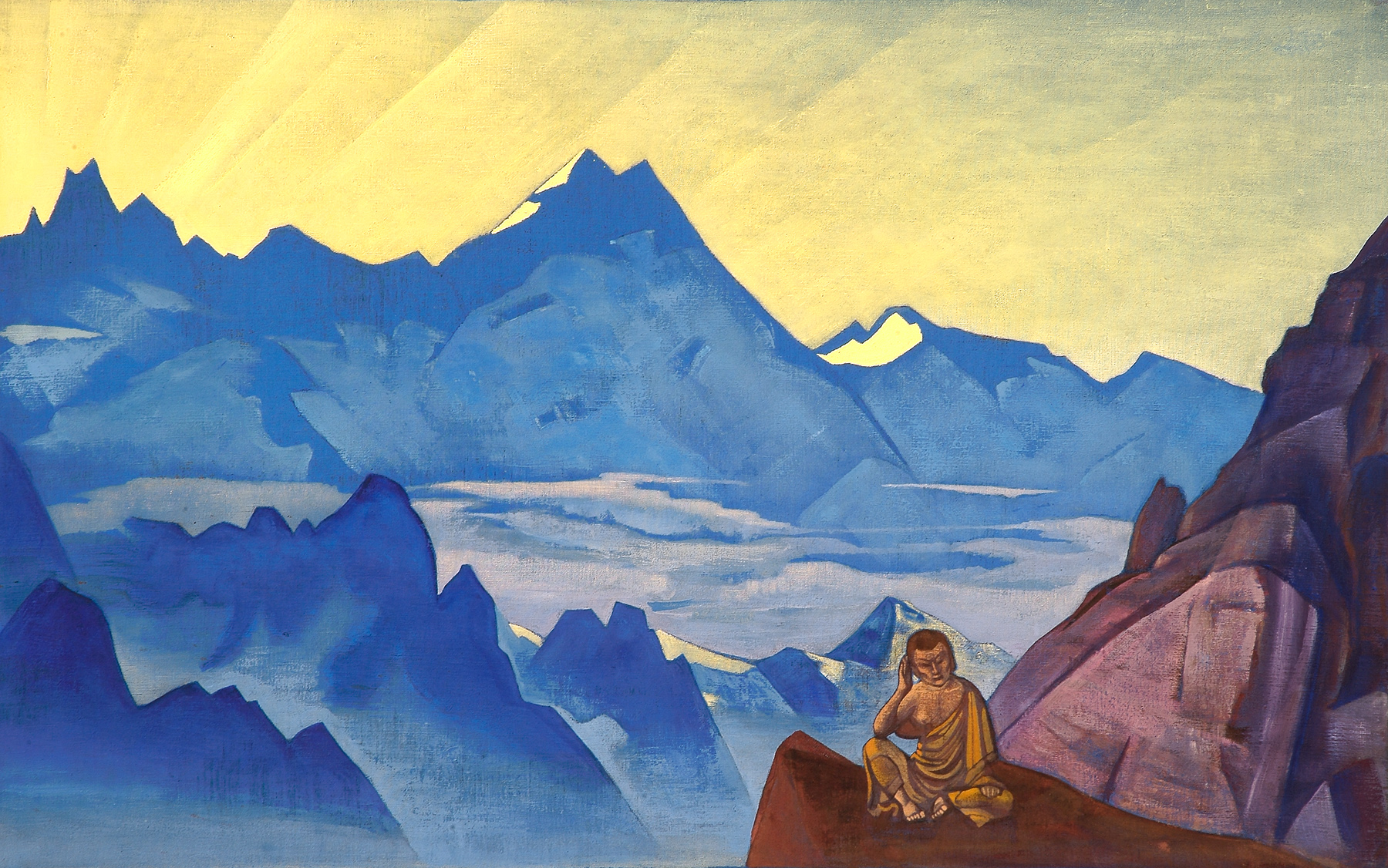


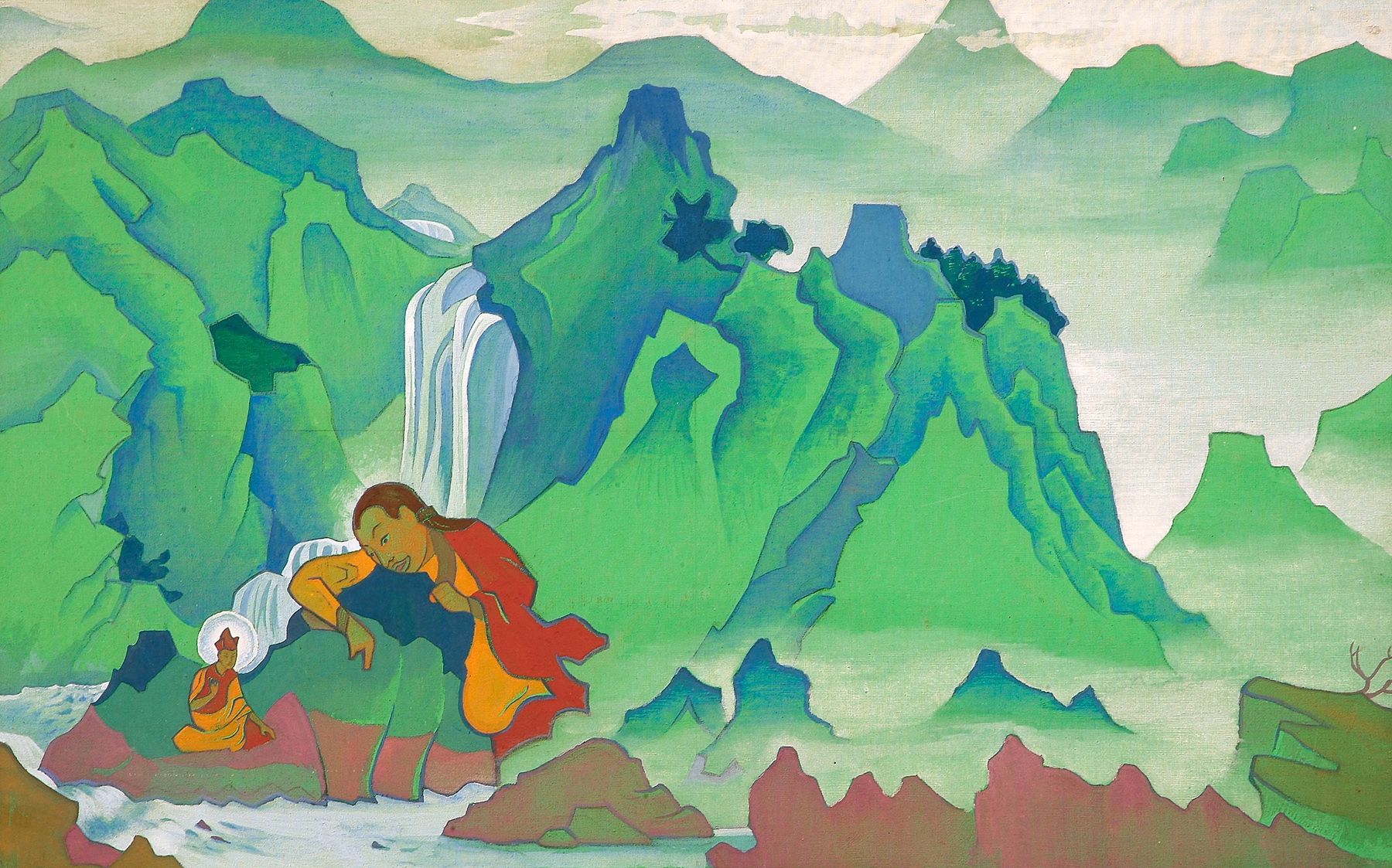
Thomas Cole
As you can probably guess, my favourite kind of art is landscapes; mountains and rivers, skies and horizons. Thomas Cole’s work is very realistic and typical for the romantic era, but also carries a sort of spiritual vibe to them as he often implemented celestial beings such as angels. He is exceptionally good at perspective and composition, as you can see in the works below – and the details are amazing.
Short trivia: Thomas Cole (1801-1811) was born in England, but moved to the United states when he was 17 with his family. He is known for his amazing landscape paintings of the American wilderness, and was mostly self taught, studying other artists’ work and reading books.
In 1842, Cole embarked on a grand tour of Europe in an effort to study in the style of the Old Masters and to paint its scenery. Most striking to Cole was Europe’s tallest active volcano, Mount Etna. Cole was so moved by the volcano’s beauty that he produced several sketches and at least six paintings of it.
Fun fact: The fourth highest peak in the Catskills (where he and his wife lived) is named Thomas Cole Mountain in his honor.
I struggled choosing a limited amount of Cole’s paintings because he has so many good ones. I chose four of the absolute best ones, in my opinion, where the two first ones are part of a four series of paintings called The Ages of Life.
(Sources: google and Wikipedia)



In the painting, Prometheus is chained to a rock on Mount Caucasus in Scythia. Zeus has punished him for endowing humans with life, knowledge, and specifically for giving humans fire.

Amid those scenes of solitude… the mind is cast into the contemplation of eternal things.
Thomas cole
Katsushika Hokusai
I love Japanese art. Although kind of typical Japanese in style, Hokusai still has his own expression, and I like the use of so many colours. He also has a lot of movement in his works, making them come alive. Just look at that wave 🙂
Short trivia: Hokusai (approx. 1760-1849), was a Japanese painter and woodblock print maker.
Hokusai had a long career, but he produced most of his important work after age 60. His most popular work is the ukiyo-e series Thirty-six Views of Mount Fuji, which was created between 1826 and 1833. It consists of 46 prints.
Hokusai was never in one place for long. He found cleaning distasteful, and instead, he allowed dirt and grime to build up in his studio until the place became unbearable and then simply moved out. The artist changed residences over 90 times throughout his life.
During a Tokyo festival in 1804, he created a portrait of the Buddhist priest Daruma said to be 600 feet (180 m) long using a broom and buckets full of ink. Another story places him in the court of the Shogun Iyenari, invited there to compete with another artist who practiced more traditional brush stroke painting. Hokusai’s painting, created in front of the Shogun, consisted of painting a blue curve on paper, then chasing a chicken across it whose feet had been dipped in red paint. He described the painting to the Shogun as a landscape showing the Tatsuta River with red maple leaves floating in it, winning the competition.
The artist also had difficulty settling on a single moniker. Although changing one’s name was customary among Japanese artists at this time, Hokusai took the practice even further with a new artist name roughly each decade. Together with his numerous informal pseudonyms, the printmaker claimed more than 30 names in total (!)
His tombstone bears his final name, Gakyo Rojin Manji, which translates to “Old Man Mad about Painting.”
Fun fact: Claude Monet acquired 23 of the Japanese artist’s prints.
(Sources: katsushikahokusai.org, artsy.net, google and wikipedia)
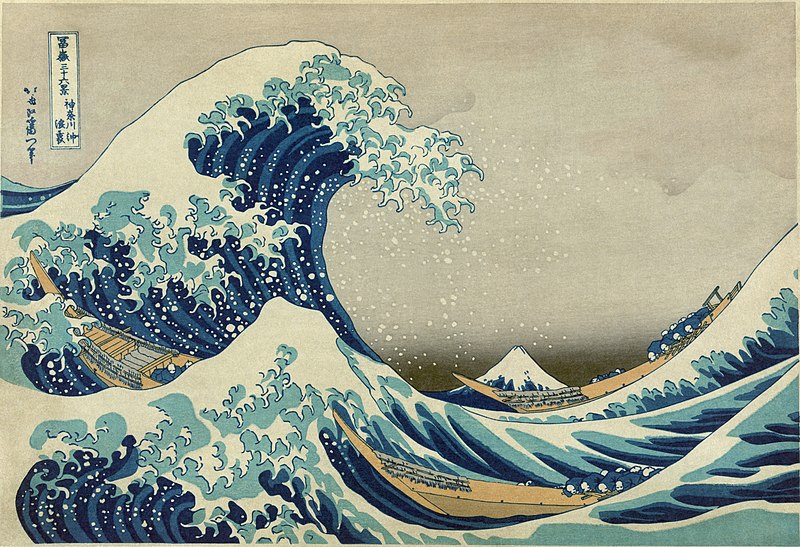

For anyone who likes Hayao Miyazaki‘s movies, I think maybe some of his creatures were inspired by this woodblock print.


“Shore of Tago Bay, Ejiri at Tokaido” – 1842

In Japanese woodblock printing, the use of Prussian blue – a synthetic pigment imported from Europe – is very common. My favourite shade of blue 🙂
John Savio
The only Sámi artist on my list, and the best one 🙂 I snuck him on there despite him not mainly being a painter, but also doing lithography. This summer, I went to see his original artworks at the Savio museum in Kirkenes, my mother’s hometown. Most of his art has arctic inspired themes; reindeers, the Sámi peoples way of life, and the wilderness (vidda).
Short trivia: John Andreas Savio (1902-1938) from Bugøyfjord, was the first sámi artist to get his own exhibition at the National Gallery (Norway). He also exhibited some of his works in Paris in 1937.
Savio grew up as an orphan and died at age 36.





Eva Harr
I was lucky enough to visit Eva Harr’s gallery in Reine, Lofoten this autumn, and got to see her original works up close. Her style is realistic combined with a fiction-like feeling; it could be a real place she has painted, but it could also be a made-up dreamy landscape. She’s good at combining elements, such as rocks, and I like how she is able to make many of her paintings look hazy.
Short trivia: Harr (1951) is a Norwegian painter, born in Harstad. She has her own gallery as mentioned, and many of her works are displayed in other museums around Norway. Her own words about her art:
from her own website, evaharr.no
“Jeg har en meditativ holdning til mitt arbeide, der naturens syklus alltid står i fokus. Døgnets ulike stemninger, lyset og mørket, nattens begynnelse og slutt – og ikke minst månen med sin mektige symbolikk og innvirkning på våre liv. Symbolene jeg finner i naturen er ofte universelle og sterkt ladet. Dette velger jeg å utforske og fordype meg i. Mitt landskap er et indre landskap, og er metafor på mine indre reiser. Jeg vil speile naturen, og dens viktige plass i våre liv. Jeg blir berørt av dette uforutsigbare som preger vår tid, uro og støy som truer vår natur. Dette preger mitt blikk, og er underliggende i mitt valg av motiv. Samtidig ser jeg klart at lysets skiftninger og landskapet i nord, er en veldig viktig inspirasjonskilde.”
Some of her amazing works (Sources: google and her website)


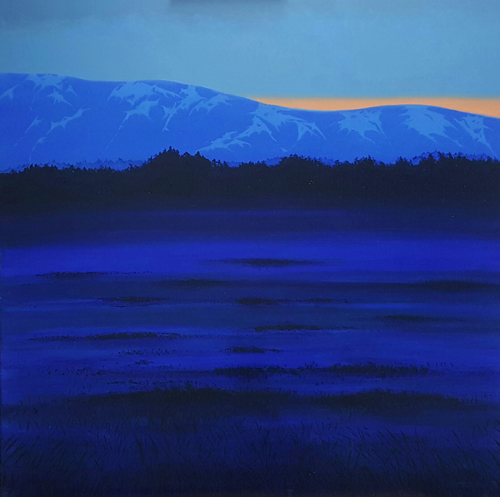

Rob Gonsalves
Four years ago, I came across one of Gonsalves’ paintings (the first one below) and it reminded me of a meditation experience I had had. So I checked out more of his works, and found so many more that I liked. Style: surrealism (or magic realism) and optical illusions.
Short trivia: Rob Gonsalves (1959-2017), also known as The Master of illusion, was a architect and painter from Ontario, Canada. His works were very much influenced by other surrealist artists, such as Dalí and Escher. He also published several books containing his works. Sadly, Gonsalves took his own life last year. Check out this webpage if you want to see more of his mindbending artworks.
(Sources: wikipedia and google)

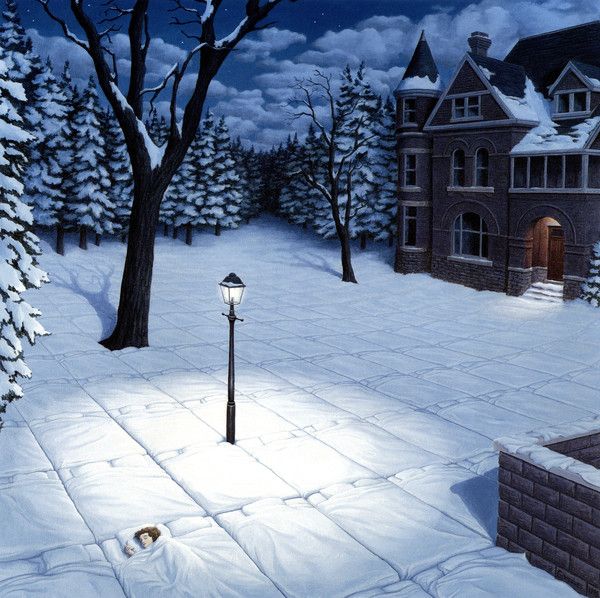
I think there is something very cozy and safe about this painting. I love the snow, and have many times thought what it would be like if the snow was warm – like a bed.


Theodor Kittelsen
One of the most famous and beloved artists in Norway. You have probably seen his works even if you don’t know it. His art reminds me of childhood, as he made illustrations to many of the big Norwegian fairytales, lores and legends. I wish I had more of Kittelsen’s art, but I have been so fortunate to get my hands on five vintage porcelain plates (for hanging on the wall) with his drawings on them, and one giclée print of “White Bear King Valemon”.
Short trivia: Theodor Severin Kittelsen (1857-1914) was a Norwegian illustrator and painter born in Kragerø. He has also written and published several poems. He came from a poor family with seven siblings, and his father died when Theodor was only 11 years old. This forced him to get out and get a job as an apprentice, which inevitably lead him to meet art historian Diderich Aall, who saw how gifted the boy was. Aall decided to pay for his art education.
In 1874, 17 years old, Kittelsen attended Wilhelm von Hannos drawing school in Christiania (now Oslo). In 1876, he travelled to München, to study at the royal art academy there.
Kittelsen’s depiction of trolls have largely shaped how people see these beloved fictional creatures.
His family’s home at Lauvlia is today a museum. Some of his most popular works were made here. His wife Inga was a stay-at-home teacher for their nine children and she organised his exhibitions.
Th. Kittelsen also composed an eerie book with illustrations about the Black Death.
Despite being very talented, Kittelsen never achieved financial security through his works.
Fun Fact: The Norwegian black metal band Burzum have used Kittelsen’s drawings for their albums Hvis lyset tar oss and Filosofem.
(Sources: wikipedia, google and theodorkittelsen.no)






The Brothers Hildebrandt
When I was a kid, I used to flick through my dad’s art books and magazines, and I specifically remember seeing fantasy paintings. Fantasy is a very unique genre, and I love how skillful you have to be with your brush to make good fantasy art. Tim and Greg Hildebrandt are two of these.
Short trivia: Greg and Tim Hildebrandt, known as the Brothers Hildebrandt (born January 23, 1939), are American twin brothers who worked collaboratively as fantasy and science fiction artists for many years. They produced illustrations for comic books, movie posters, children’s books, posters, novels, calendars, advertisements, and trading cards. Tim Hildebrandt died on June 11, 2006.
They began painting professionally in 1959 as the Brothers Hildebrandt. The brothers both held an ambition to work as animators for Walt Disney, and although they never realized this dream, their work was heavily influenced by illustration style of Disney feature films such as Snow White, Pinnochio and Fantasia.
The brothers are best known for their popular The Lord of the Rings calendar illustrations, illustrating comics for Marvel Comics and DC Comics, original oil paintings for a limited edition of Terry Brooks’s The Sword of Shannara, and their Magic: The Gathering and Harry Potter illustrations for Wizards of the Coast.
(Sources: timhildebrandt.com and Wikipedia)

A scene from Tolkien’s children’s book The Hobbit.




Phil Couture
An oil painting artist I discovered last year on Etsy. As mentioned above, I like Asian art, and also fine art, so Phil Couture’s oil portraits of geishas really deserved a place on my list. I ordered one of his prints not long ago. Style: realism.
Short trivia: Philippe Couture was born in Drummondville, Canada in 1984, raised in Lakeland, Florida, and currently resides in Kyoto, Japan. He has been drawing and painting his entire life and Phil’s art education was primarily self-taught. His training consisted of drawing and painting from life, studying masterpieces in museums around the world, and employing exercises taught by classical ateliers. – from his own website.
Couture also has his own Instagram page.
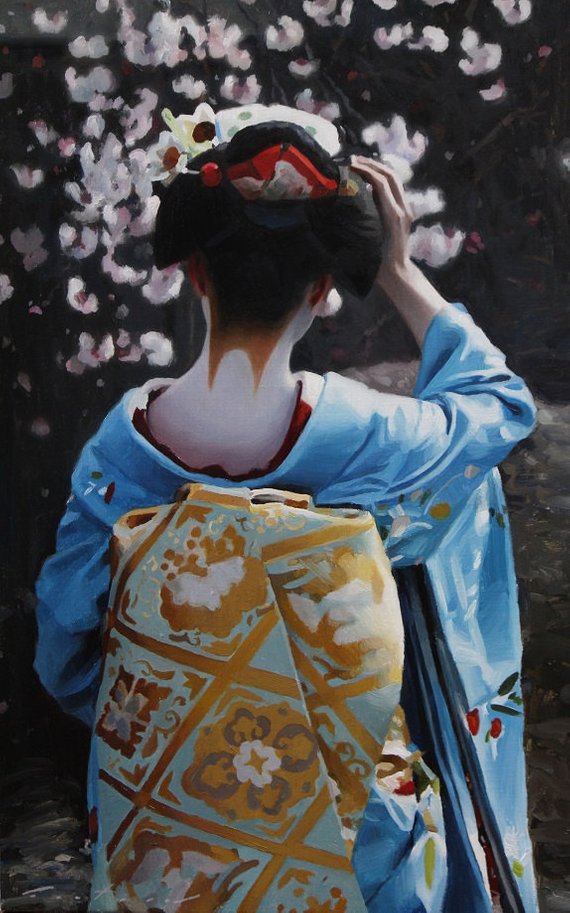


Thanks for reading! Who is your favourite artist?


1 thought on “My top 10 favourite painters”